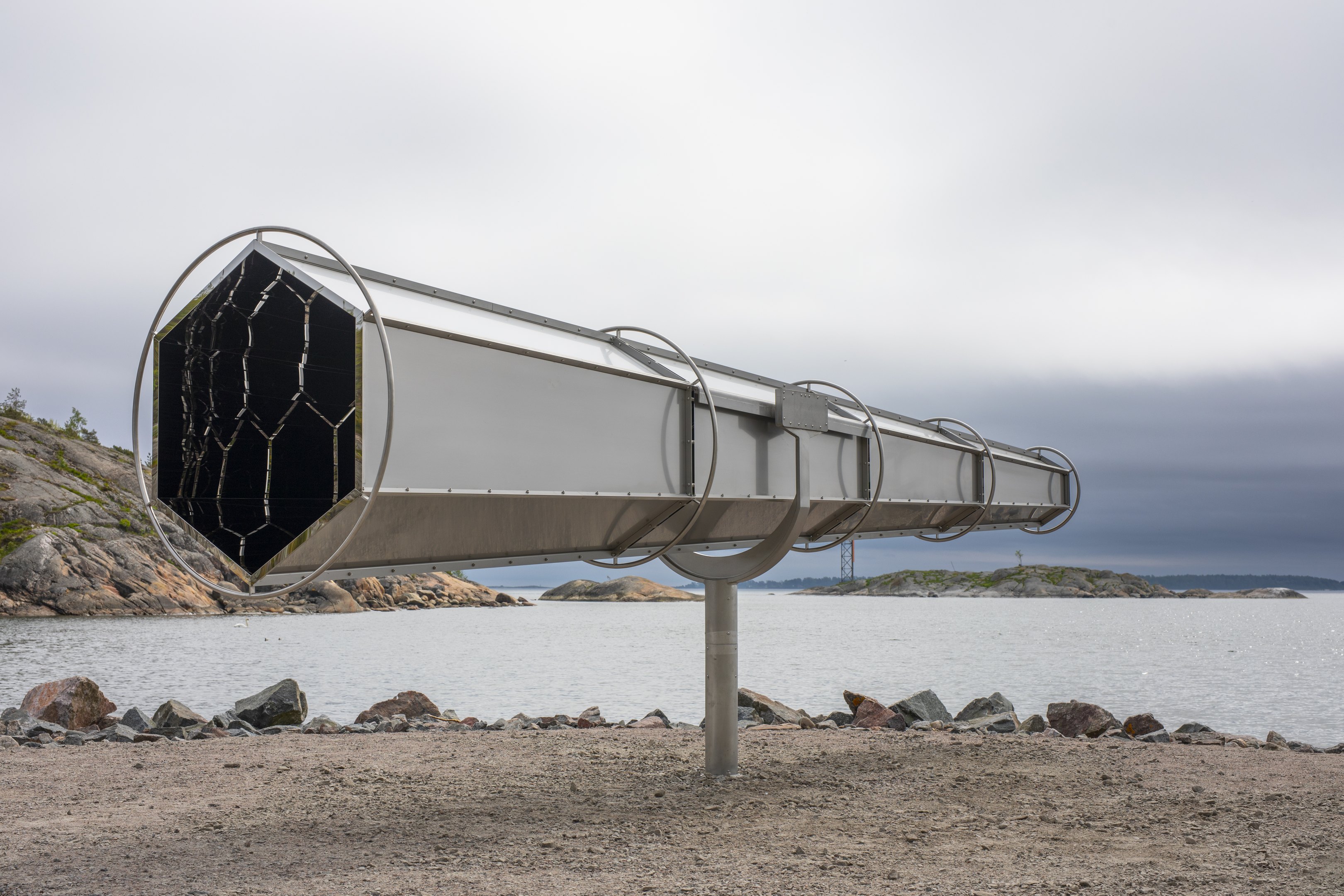Olafur Eliasson (b. 1967) is an Icelandic-Danish artist known for his large-scale installations, public space projects, and sculptural works exploring the mutability of the viewer’s gaze and experience.
His practice is rooted in the idea that everyone perceives art, objects and environments in their own unique way. Our viewing experience is always shaped by our individual – anthropocentric – viewpoint. Eliasson’s interest in different ways of seeing led him to begin working with kaleidoscopes in the early 2000s, and they have since become one of the recurring elements in his art.
Photo: Louise Yeowart

Olafur Eliasson: Viewing machine, 2001/2003. Helsinki Biennial 8.6.–21.9.2025, Vallisaari Island. © 2001/2003 Olafur Eliasson. Photo: HAM / Helsinki Biennial / Maija Toivanen
Viewing machine, 2001/2003
Artwork location: Vallisaari Island
A kaleidoscope is an optical instrument that transforms one’s vision into shifting geometrical patterns by means of multiple reflections. In art and poetry, this device often appears as a metaphor for the ever-shifting human mind and its processes of crystallization. It also symbolizes identity formation and the fluctuating way we experience the world. Just as the reflections of the kaleidoscope’s many mirrors converge as a coherent pattern, so too each new experience we encounter is reflected against our earlier history of experiences. The slightest nudge of the kaleidoscope transforms the pattern into something wholly different, just as a jarring experience can sometimes radically transform our personal experience of the world. A kaleidoscope also evokes the compound view of insects, which could be seen as a playful invitation to imagine a more-than-human way of seeing the world.
Viewing machine, installed on the isthmus between Vallisaari and Kuninkaansaari, can be rotated and shifted to focus on various details in the landscape, inviting viewers to choose which parts of the scenery are integrated as part of the work. Each individual viewing experience is unique, yet uniform, because the kaleidoscope continually transforms the viewed landscape into a symmetrical abstract pattern. Eliasson’s kaleidoscope foregrounds the plurality of our experience of the natural world, while also inviting us to discover new perspectives on nature and the world around us.